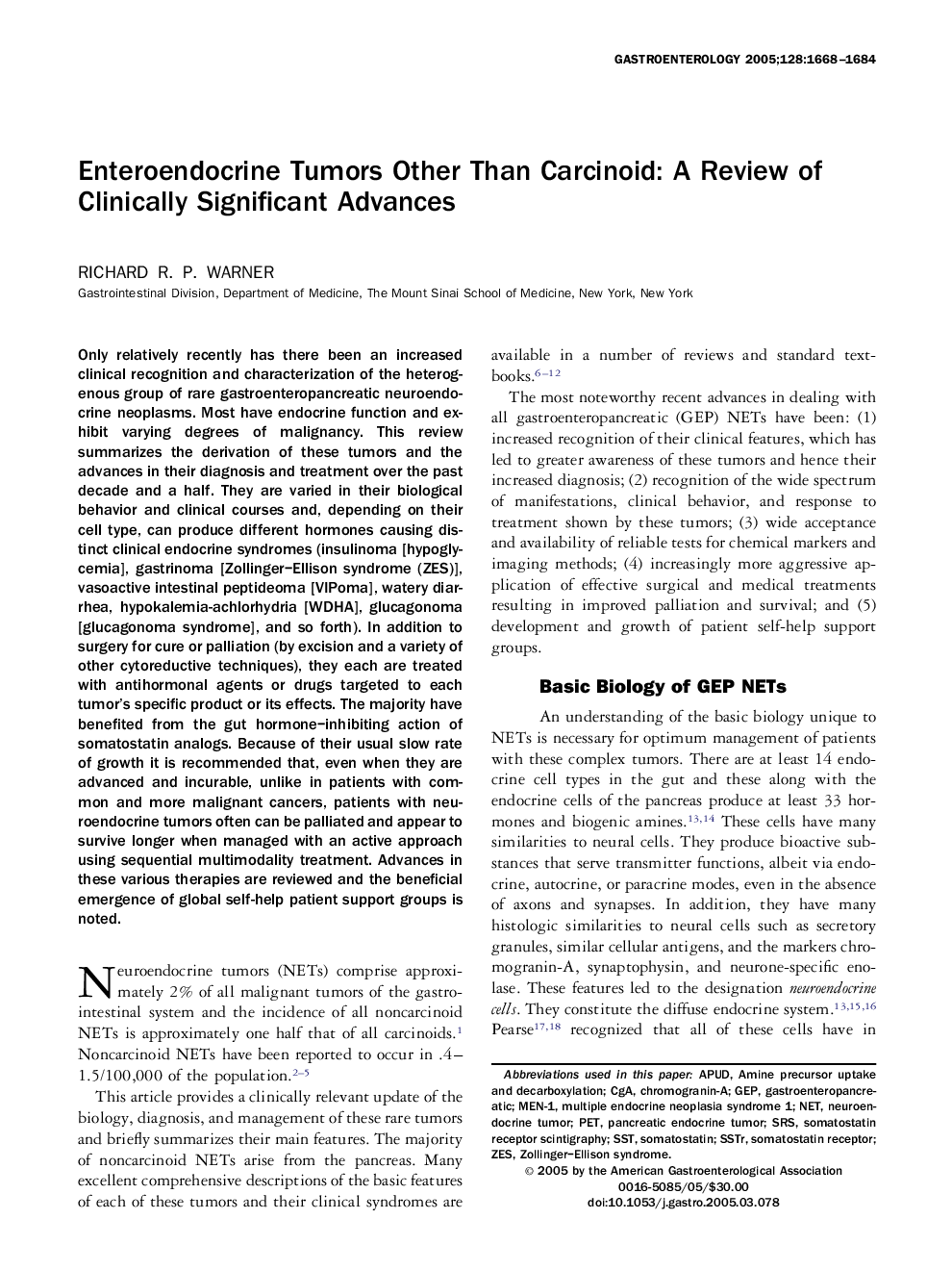| Article ID | Journal | Published Year | Pages | File Type |
|---|---|---|---|---|
| 9244272 | Gastroenterology | 2005 | 17 Pages |
Abstract
Only relatively recently has there been an increased clinical recognition and characterization of the heterogenous group of rare gastroenteropancreatic neuroendocrine neoplasms. Most have endocrine function and exhibit varying degrees of malignancy. This review summarizes the derivation of these tumors and the advances in their diagnosis and treatment over the past decade and a half. They are varied in their biological behavior and clinical courses and, depending on their cell type, can produce different hormones causing distinct clinical endocrine syndromes (insulinoma [hypoglycemia], gastrinoma [Zollinger-Ellison syndrome (ZES)], vasoactive intestinal peptideoma [VIPoma], watery diarrhea, hypokalemia-achlorhydria [WDHA], glucagonoma [glucagonoma syndrome], and so forth). In addition to surgery for cure or palliation (by excision and a variety of other cytoreductive techniques), they each are treated with antihormonal agents or drugs targeted to each tumor's specific product or its effects. The majority have benefited from the gut hormone-inhibiting action of somatostatin analogs. Because of their usual slow rate of growth it is recommended that, even when they are advanced and incurable, unlike in patients with common and more malignant cancers, patients with neuroendocrine tumors often can be palliated and appear to survive longer when managed with an active approach using sequential multimodality treatment. Advances in these various therapies are reviewed and the beneficial emergence of global self-help patient support groups is noted.
Keywords
Related Topics
Health Sciences
Medicine and Dentistry
Gastroenterology
Authors
Richard R.P. Warner,
